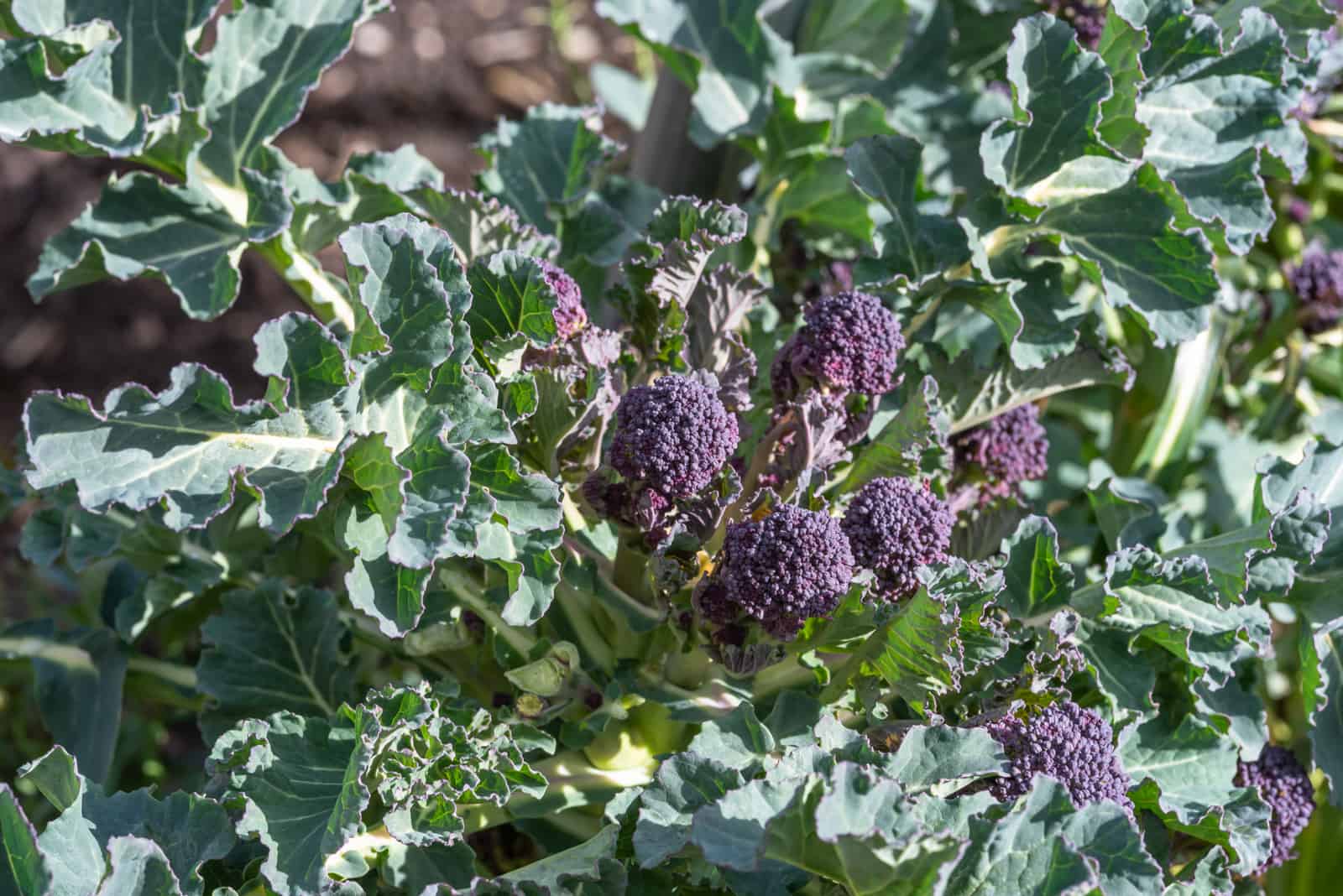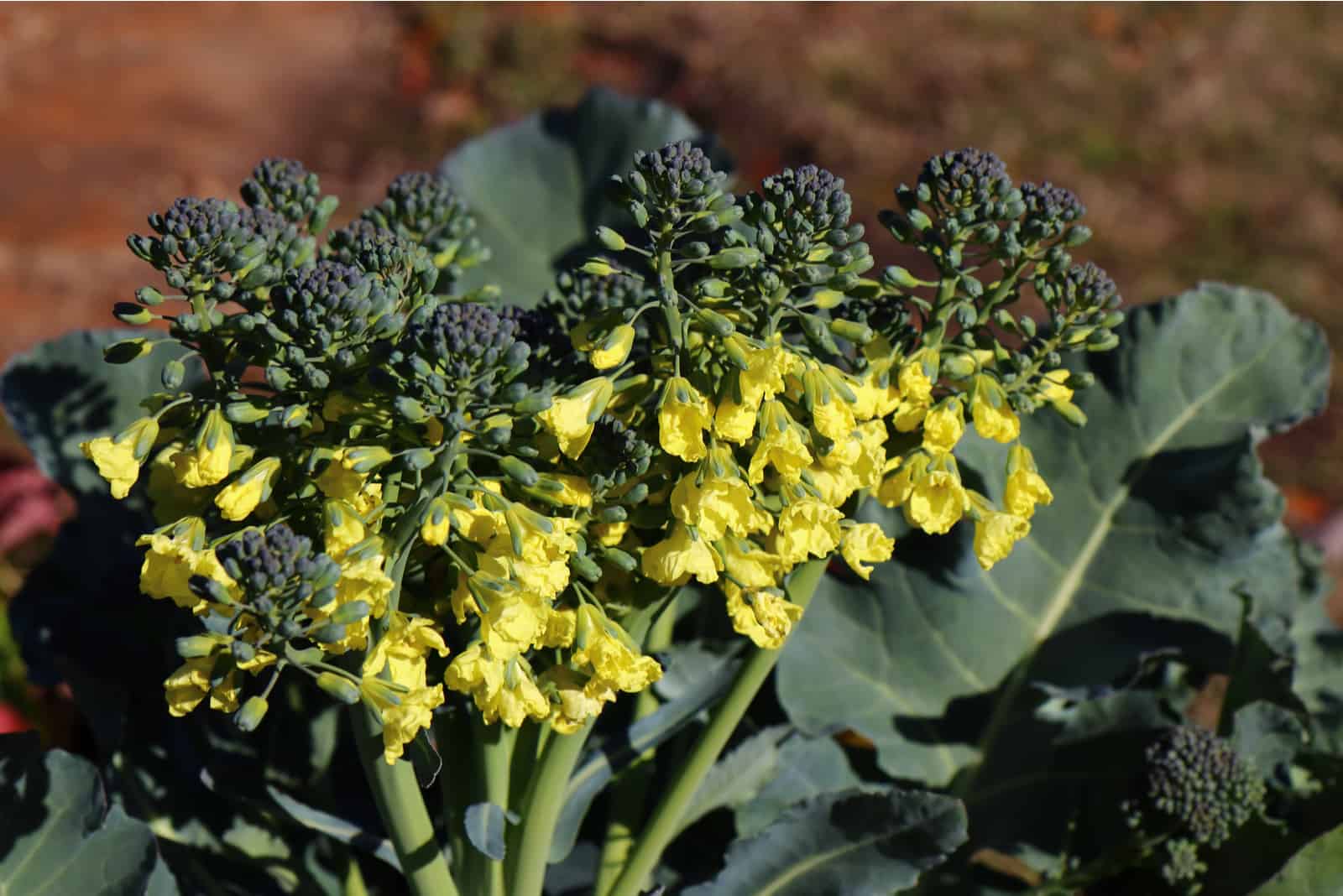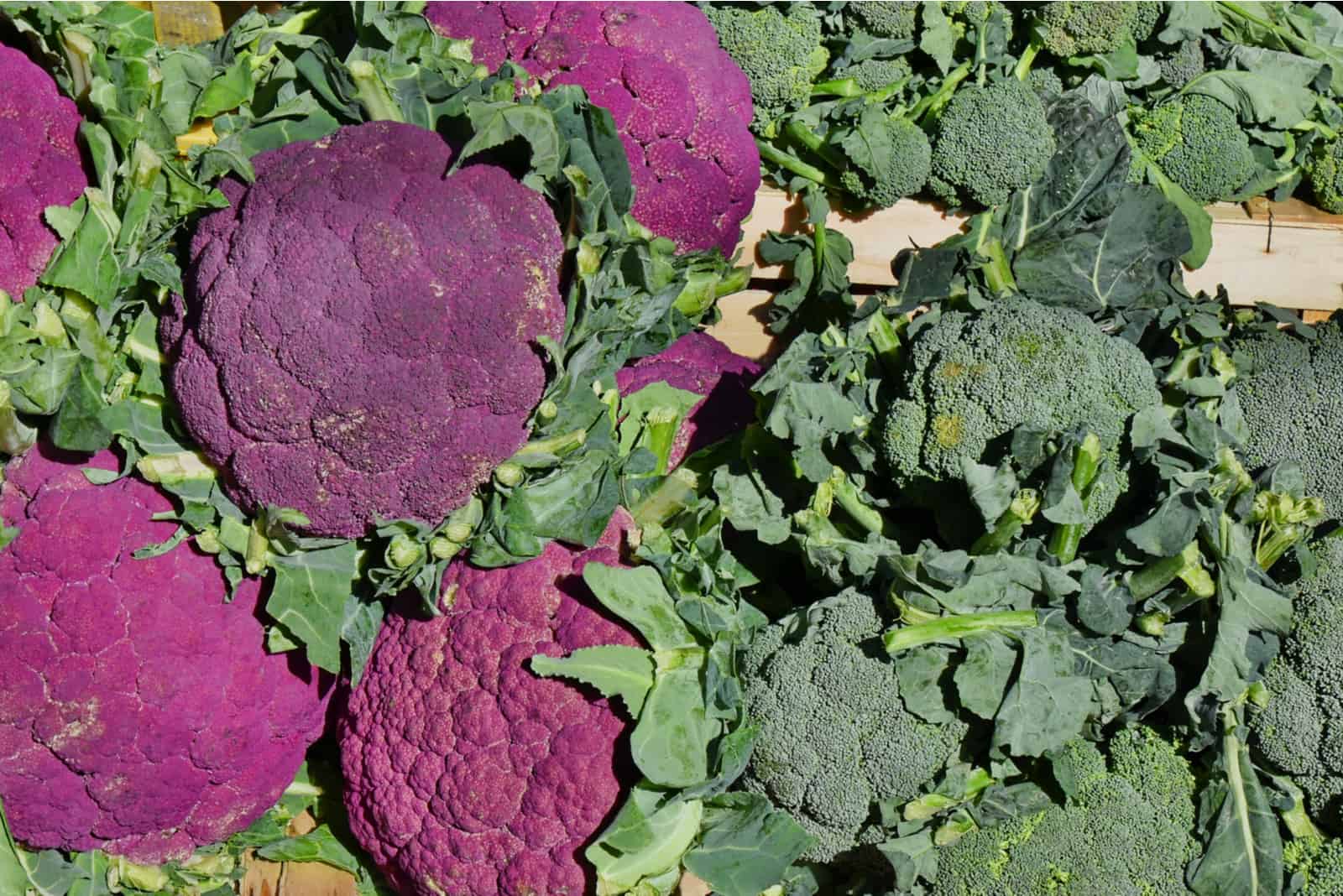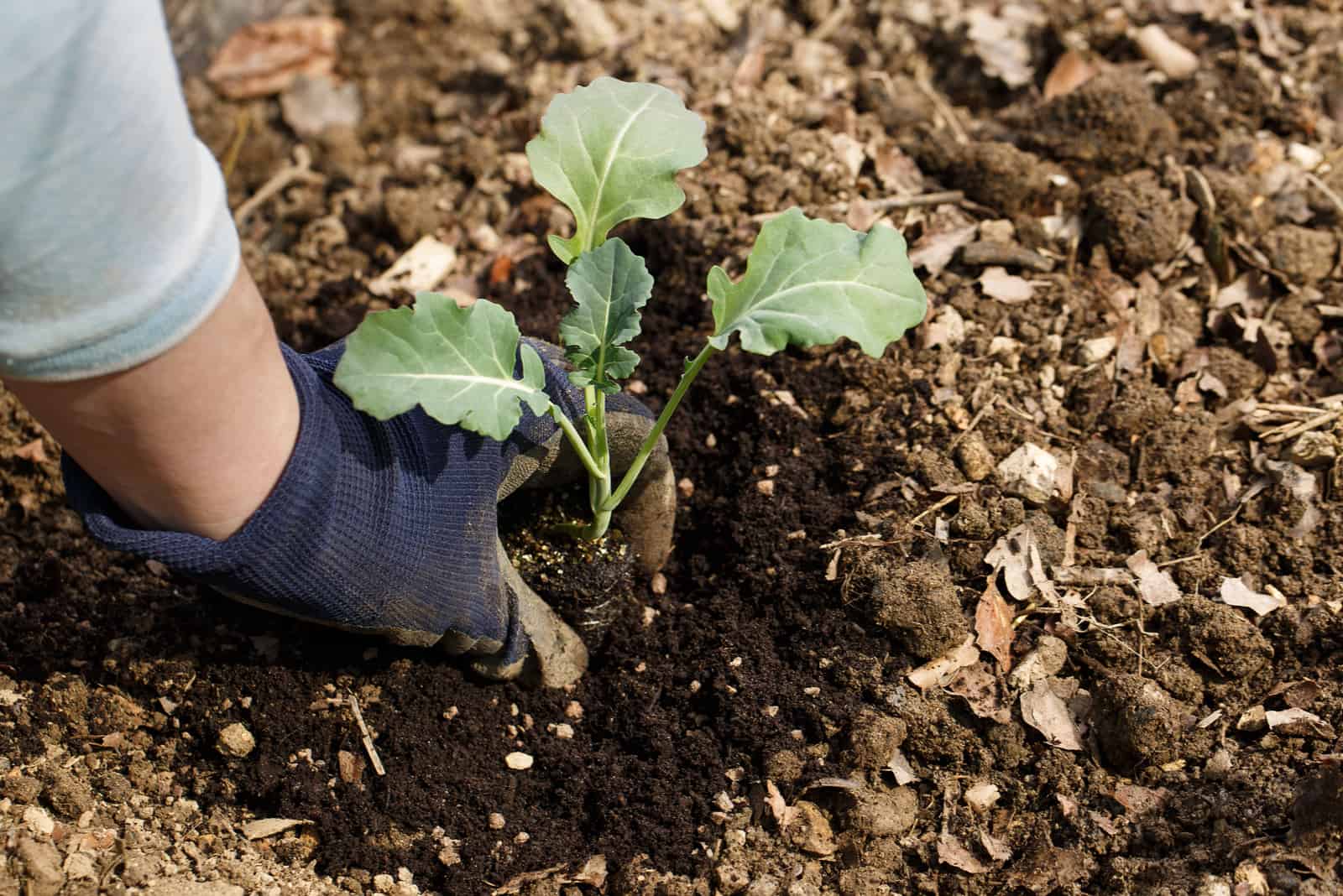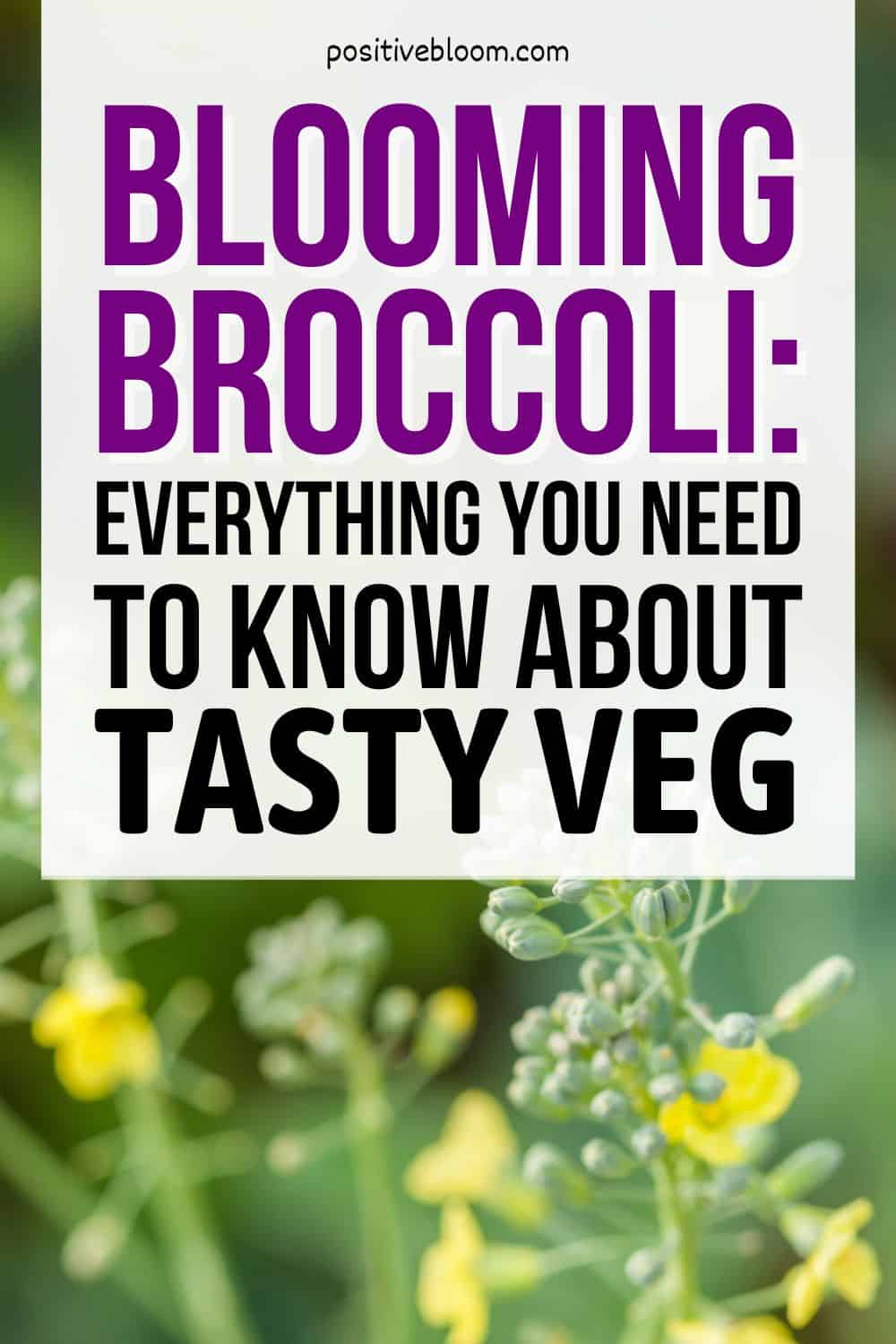Positive Bloom is an Amazon Associate and we earn from qualifying purchases through these links at no extra cost to you.
The broccoli plant is a vegetable that we can’t live without, especially when we’re trying to cut our carb intake.
But, what happens when you have blooming broccoli in your garden? Can you eat it? Should you stop it from flowering? And, what are its benefits? These are just some of the questions we’ll tackle in this article.
But before we get to that, let’s learn some of the basic info about broccoli:
[table id=164 /]
Now you know the general specifics about broccoli, and in the article below you’ll learn all about flowering broccoli, its flowers, and its growth cycle.
So, without further ado, let’s begin!
Blooming Broccoli
Broccoli is a cool-weather crop and is an essential vegetable that is found in many home gardens. It is a healthy vegetable, rich in antioxidants, and it can be eaten raw or cooked.
In this section, we’ve decided to talk about broccoli flowers and why broccoli blooms in the first place.
The first part will deal with the appearance of broccoli blossoms and how and why broccoli gets pollinated. The second part will bring you some of the main reasons for bolting or flowering broccoli.
Broccoli Flowers: Type And Appearance
Your vegetable garden is brimming with flowers time and again, but what if those flowers aren’t that desirable?
We know that peppers need to bloom before they can set fruit, but that’s not the case with broccoli. Broccoli is the veggie that we consider too old to eat once it blossoms.
Yellow broccoli flowers may look attractive, but there is more to them than just that. One plant contains both male and female flowers, but the pollen from the male part can’t fertilize the female ova of the same plant.
There’s a specific chemical that the plant produces which makes it self-incompatible. But, don’t worry; the next section will bring you everything you need to know about pollination.
Pollination
Pollination is a vital stage of reproduction for every flower, fruit, and vegetable. Even though broccoli is not the type of veggie that sprouts its central head from the flowers, its blooms are still essential.
As we have already mentioned, the female broccoli flowers cannot be pollinated by the male flowers of the same plant. However, no one said anything about cross-pollination being off the table.
That’s where bees, bumblebees, wind, and other pollinators come into play. They transfer the pollen from one plant onto another and fertilize the female ova in the process.
However, what’s interesting about broccoli is that it can be pollinated by other plants belonging to the same family, such as cauliflower, brussels sprouts, and cabbage.
Therefore, you need to isolate your broccoli plants from other similar species if you want to have a pureblood variety. Still, if you’re willing to risk it and love to experiment, you don’t have to make any extensive changes to your edible garden.
That’s how we got broccolini, by growing broccoli and Chinese broccoli in close proximity. Simply brace yourself and expect the unexpected!
Why Broccoli Blooms
Blooming is a natural process that all broccoli plants undergo and is one of the last stages of its growth cycle.
Once the yellow flower buds open, they can get pollinated, and if the pollination is successful, they will produce seeds that you can plant next year.
If the weather conditions and all the requirements are met, you’ll have to wait until the end of the season to see broccoli bolting.
However, imperfect growing conditions can speed up this process, and in the next section, you can read about different things that cause premature bolting.
5 Causes Of Bolting
Premature bolting can be a real drag. You might have thought you had one more chance to harvest your broccoli heads before the plant flowers, and then something unexpected happens.
In the following section, you can read about those (un)expected things, such as weather conditions and different stressors that lead to early flowering.
Hot Weather
High temperatures are the leading reason for early bolting. This plant is a cool-weather crop, and as such, it prefers somewhat colder, springtime temperatures.
However, when the temperatures get higher than 70 °F (21 °C), it starts to produce flowers. Flowers don’t necessarily mean that you can’t harvest the remaining head of broccoli, but they can make it taste bitter.
After flowering, the plant starts to die, and since broccoli can be harvested two or three times a year, it’s in no one’s interest to quicken up this process.
Thankfully, it’s the temperature of the soil that’s important, and as long as the roots are nice and cool, you have nothing to worry about.
Cold Soil
On the opposite side of the spectrum, cold soil can be another reason for the sudden appearance of flowers.
It might seem weird at first, but once the cold weather ruins your expected harvest, you’ll have to try and do everything to keep those roots warm. If the soil temperature is lower than 40 °F (4 °C) for a couple of weeks, the plant can get really stressed and start bolting in return.
If you live in a climate that experiences a cold winter, the best thing to do is to plant the broccoli some time after the last frost date, just to be on the safe side.
Transplant Shock
Transplant shock is a rather common stressor, and broccoli is a delicate veggie that is more susceptible to this misfortune than some other plants.
However, transplanting is necessary if you start your plants indoors, but there are some things you can do to help your plant come out of this process unhurt, and we’ll discuss them more thoroughly in the next section.
Increased Day Length
Believe it or not, broccoli can sense that the days are getting longer, and this can incite their flowering stage.
Summertime means that the growing season is coming to an end, and the plant starts to produce flowers and seeds.
But, what’s even more strange is that you can actually trick your broccoli plant into believing that the days haven’t gotten longer. Usually, longer days mean more sunlight, but there is a way to address this, and you can read all about it in our next section.
Shortage Of Fertilizer
Finally, a lack of organic content and soil nutrients can lead to bolting broccoli, but you already know what to do about this.
You simply have to use proper fertilizers, and the following section brings you everything you need to know about which fertilizer to use and when to use it.
How To Stop Broccoli From Bolting
The previous section examined the main reasons for bolting broccoli, and in the paragraphs below, you’ll find solutions to these problems.
Keep The Soil At The Right Temperature
Broccoli prefers soil temperatures between 50 and 70 °F (15-21 °C), and if you don’t want to see flower heads early in the season, you can do a couple of things to prevent it.
Plant Early
The first thing you can do to increase your yield and avoid early bolting is to plant the broccoli seeds as early as you can. However, don’t plant it in winter, as the cold can destroy it before it even starts to develop.
We always start our veggies indoors and then transplant them outside once all danger of frost is gone.
Mulch
You can also keep the roots cool by mulching the ground around your plants using grass clippings, straw, and shredded dry leaves. Mulch retains moisture and keeps the temperature of the roots at the right level, so you don’t have to worry about early blooming.
Also, you should water your plants more often with cold, but not freezing, water as this can lower the soil temperature.
Use Row Covers
Finally, we need to add that row covers can protect your broccoli plant from the scorching sun. You can use shade netting if you need to, but we have never been disappointed with these ones that we found on Amazon.
[lasso id=”3527″ link_id=”2220″ ref=”amzn-ultra-fine-garden-mesh-netting-faraer-plant-covers-8×24-garden-netting-for-protect-vegetable-plants-fruits-flowers-crops-greenhouse-row-cover-protection-mesh-net-patio-gazebo-screen-barrier-net”]
However, if the weather is too cold for your broccoli plants, you might need some covers that keep the heat in. In that case, the covers below can do a better job than the ones above.
[lasso id=”3528″ link_id=”2221″ ref=”amzn-valibe-plant-covers-freeze-protection-10-ft-x-30-ft-floating-row-cover-garden-fabric-plant-cover-for-winter-frost-protection-sun-pest-protection-10ft-x-30ft”]
Alleviate Transplant Shock
One of the best ways to help your broccoli get through transplantation is to transplant it early. Wait until the plant starts getting established, but don’t let it get too big.
The ideal transplantation size of broccoli seedlings is around 2.5 inches (7 cm) as the root system isn’t too extensive at this size.
Another thing that can alleviate transplant shock is to give your new plant more nutrients that can help it forget it has ever been moved. Super seaweed, such as the one below, has never disappointed our plants or us.
[lasso id=”3529″ link_id=”2222″ ref=”amzn-microlife-super-seaweed-professional-grade-organic-liquid-concentrate-root-stimulator-foliar-nutritional-spray-for-all-plants-1-gallon”]
This video brings you some great tips for transplanting broccoli, so you can avoid transplant shock.
Control The Amount Of Sunlight
Controlling how much sunlight broccoli gets is a great way of tricking it into believing that the days haven’t been prolonged.
One way to do this is to keep the broccoli somewhere where it isn’t exposed to direct sunlight all day long. A place where it gets direct sunlight for only half a day is an excellent way to achieve this.
Also, you can grow broccoli in the shade of some other plants, or you can use shade netting to reduce the amount of sunlight the plants are getting.
Depending on the size of your broccoli garden, you can order either a giant or standard net tunnel. Still, the one below has proven quite reliable in tricking broccoli into thinking that it’s springtime.
[lasso id=”3530″ link_id=”2223″ ref=”amzn-tierra-garden-50-5020-haxnicks-easy-shade-net-tunnel-garden-cloche-giant”]
Use Proper Fertilizers
Broccoli needs plenty of nutrients in order to form its head and not flower stalks, so you’ll need to fertilize this veggie whether you grow it in a container or an outdoor garden.
A well-balanced, all-purpose fertilizer, such as 14 14 14 is perfect for potted broccoli, but you’ll need to know when and how to apply triple 14 fertilizer. In short, container broccoli requires this fertilizer at the time of planting and then again in the middle of the season.
For outdoor broccoli, use an all-purpose fertilizer, such as triple 20, at the time of planting and follow the instructions on the package.
Is Blooming Broccoli Safe To Eat?
If you didn’t manage to harvest broccoli before it flowered, don’t worry! Flowers don’t make broccoli inedible or poisonous.
In fact, the actual flowers are even safe to eat, and some people eat them or use them to decorate their salads.
Also, the flowers and heads are not the only broccoli parts we can enjoy. Broccoli leaves, stems, and buds are all edible parts, and some people might even prefer them over the broccoli heads.
However, you need to bear in mind that the longer the flowers are allowed to grow, the more bitter the broccoli will taste. But, it’s all a matter of preference, and whereas some people describe them as grainy and bitter, others find them to have a nutty flavor and enjoy their texture.
But, there is one thing that a fresh broccoli has and a bolted one doesn’t: nutrients. A flowering broccoli loses its nutritional value, but it shouldn’t stop you from experimenting with flavors and new dishes.
What Are The Benefits Of Broccoli?
Broccoli is a vegetable with many health benefits, and not even flowering can destroy all the beneficial nutrients and their benefits to our overall health.
It contains antioxidants that can reduce blood sugar, chronic disease development, cholesterol levels, and oxidative stress.
Several bioactive compounds in broccoli can help reduce inflammation and even protect against certain cancer varieties, such as breast cancer, stomach, prostate, and kidney cancer, and many more.
Other bioactive compounds found in broccoli can slow down aging, and the fiber and antioxidants that this veggie contains can reduce constipation and help with your digestion.
This vegetable is also laden with vitamin C, which boosts the immune system, and the vitamin K and calcium promote healthy teeth, bones, and joints.
10 Stages Of Broccoli Growth Cycle
The following section will bring you the ten stages of the broccoli growth cycle and how to get from the seed to the mature broccoli head.
1. Planting
The first stage is deciding when to plant your broccoli. This is a cool-weather crop, so the best time to plant it is in spring, when the danger of frost has passed.
However, our preferred way of starting broccoli is indoors, and in that case, you should plant it in late winter or early spring, approximately a month and a half or two months before the last expected frost date.
Keep the soil moist and, if everything goes well, your seeds should start germinating at once.
2. Germination
Germination is the next stage, and it doesn’t last long. You can expect both your indoor and outdoor broccoli to germinate within 10-14 days.
In this process, the primary root emerges from the broccoli seed, and it is responsible for keeping the plant straight.
It absorbs nutrients and water from the soil and these spurt the plant’s growth.
3. Sprouting
The third stage is the sprouting of the first shoot from the seed. The sprout reaches toward the sun, and once it resurfaces, the plant’s energy goes to the development of its leaves.
4. Vegetative Growth
Vegetative growth is the stage in which the plant forms its first true leaf forms and then it continues to grow additional sets of leaves.
The formation of the first true leaf is rather slow as the plant can only use the food from the endosperm, but once they develop, the plant can photosynthesize and create the food and energy it needs.
After the plant starts photosynthesis, the vegetative growth accelerates, and each new set of leaves quickens the pace of plant growth.
At the beginning of this stage, the root systems are also developing, but once their growth has finished, the plant focuses on upward growth and the further development of leaves.
Finally, in this stage, the plant stores food and other resources that it will later use for flowering.
5. Formation Of The Main Head
Once the main head starts to develop, the vegetative growth of the plants almost completely stops, and all its energy goes to the formation of the central head.
The broccoli head forms at the top of the stalk, and it is actually a flower head that we harvest before it flowers.
6. Harvesting
The sixth stage of the broccoli growth cycle is harvesting, but it is not the last stage. Broccoli can be harvested a few times during its growing season, before producing flowers and seeds.
The main head is ready for harvest once fully formed, that is, when the floret is vividly deep green, but before the flower buds open and show yellow flowers.
7. Side Shoots Development
Harvesting the main head doesn’t mean the plant is finished with producing delicious florets.
Plant hormones induce the development of side shoots, and given time, these shoots grow into smaller heads that can be harvested and increase the plant’s yield.
Again, you should wait until these heads mature to harvest them, but be careful not to wait too long as there’s no need for bitter-tasting broccoli.
8. Blooms Opening
As the summer approaches, the soil temperature rises, and the plant hormones send signals to the plant.
Florets grow leggy, and the green flower buds open and reveal yellow flowers. The flowering signifies that the end is near, and the plant is preparing seeds, from which it can be regrown.
You can still harvest the remaining heads as they can be eaten, or you can leave them be if you dislike the bitter taste. Many gardeners uproot the flowering broccoli, but we love to leave them to continue their growth cycle and form seeds that we can use next year.
9. Formation Of Seeds
If the flowers are pollinated, the yellow flowers will form seeds you can harvest. But, without pollination, there can be no seeds, so ensure you have a few broccoli plants nearby that bees can pollinate.
10. Senescence
Once the seeds are formed, the growth cycle of broccoli is completed, and the plant cannot continue growing.
It has spent almost all of its energy and other resources on the formation of seeds, leaving no food or energy for additional growth.
The plant replaces growth hormones with those that stimulate senescence, and the plant slowly withers away.
Here’s a video on growing broccoli from seed that will really take your gardening skills to a new level:
You Asked Us
Our talk about broccoli is not over, and in this last section, we’ll answer some of the most frequent questions about broccoli and its flowers.
What do I do if my broccoli is flowering?
If your broccoli has tight buds, with the exception of a few flowers, you can simply pick off the flowers and harvest the head, which will be as tasty as ever.
However, if the flowering is more extensive, the best thing you can do is leave the broccoli to finish its growth cycle. Flowering is the first step to forming seeds, and if you’re patient enough, you can start your heirloom variety and never run out of this healthy veggie.
What is the best way to harvest my broccoli?
The best way to harvest broccoli is by using a knife to cut the stem that holds the head. Cut approximately 5 inches (12.5 cm), or even more, below the head, and then remove the stem.
You should use a sharp knife to prevent any additional damage that will discourage side shoot development and a bigger yield.
After the side shoots develop and form florets, you can harvest them the same way you harvested the main head.
What is the difference between broccoli and broccoli rabe?
Broccoli rabe has dark green leaves, and, unlike broccoli, all of its parts are eaten. The broccoli stems can also be eaten, but they are usually tough, whereas broccoli rabe’s stems don’t even require peeling as they are not as thick.
Also, broccoli rabe has more slender stems and smaller florets than broccoli. Finally, broccoli rabe has a strong flavor, bitter even, unlike broccoli’s bittersweet taste.
How will I know that the broccoli is flowering?
You’ll know that the broccoli is flowering when its head stops growing, and the rest of the plant grows leggy and starts producing yellow flowers.
Once the plant starts flowering, the head starts dying, and that’s where the bitter flavor comes from.
To Wrap Up
Now you know everything about blooming broccoli: what causes it, is it necessary, is it safe to eat, and how to stop it from flowering prematurely.
We’ve also included a broccoli life cycle, of which flowering is an important stage. Even though we might not like it at first as it makes the remaining heads bitter, flowering is the beginning stage of the formation of seeds, without which, we would have no broccoli.
Finally, we can only wish you good luck in growing broccoli and ask you not to be too harsh to this delicious vegetable if it turns bitter.
Your next year’s crop will thank you for that!
Until next time!
Like this post? Share or pin it for later!

